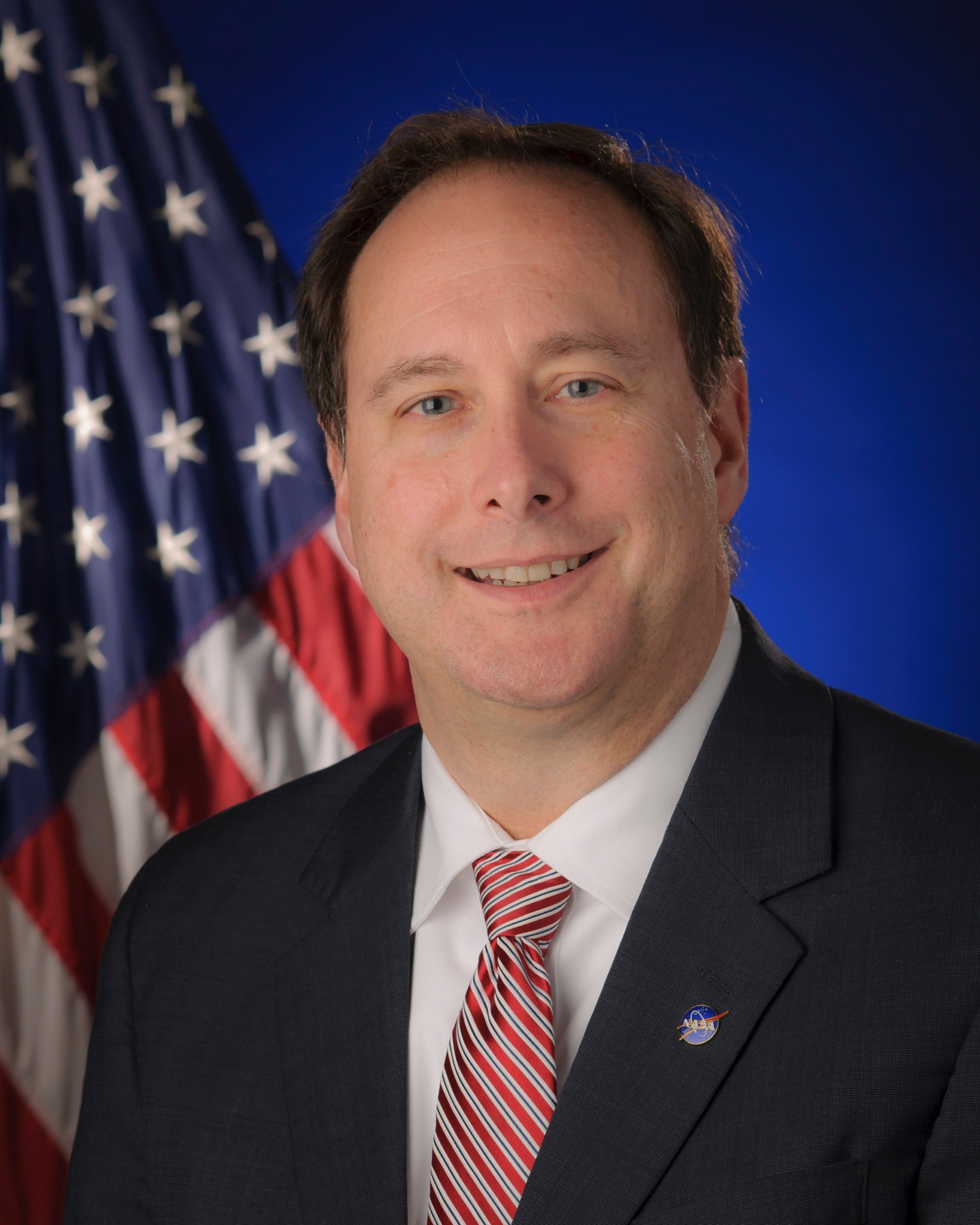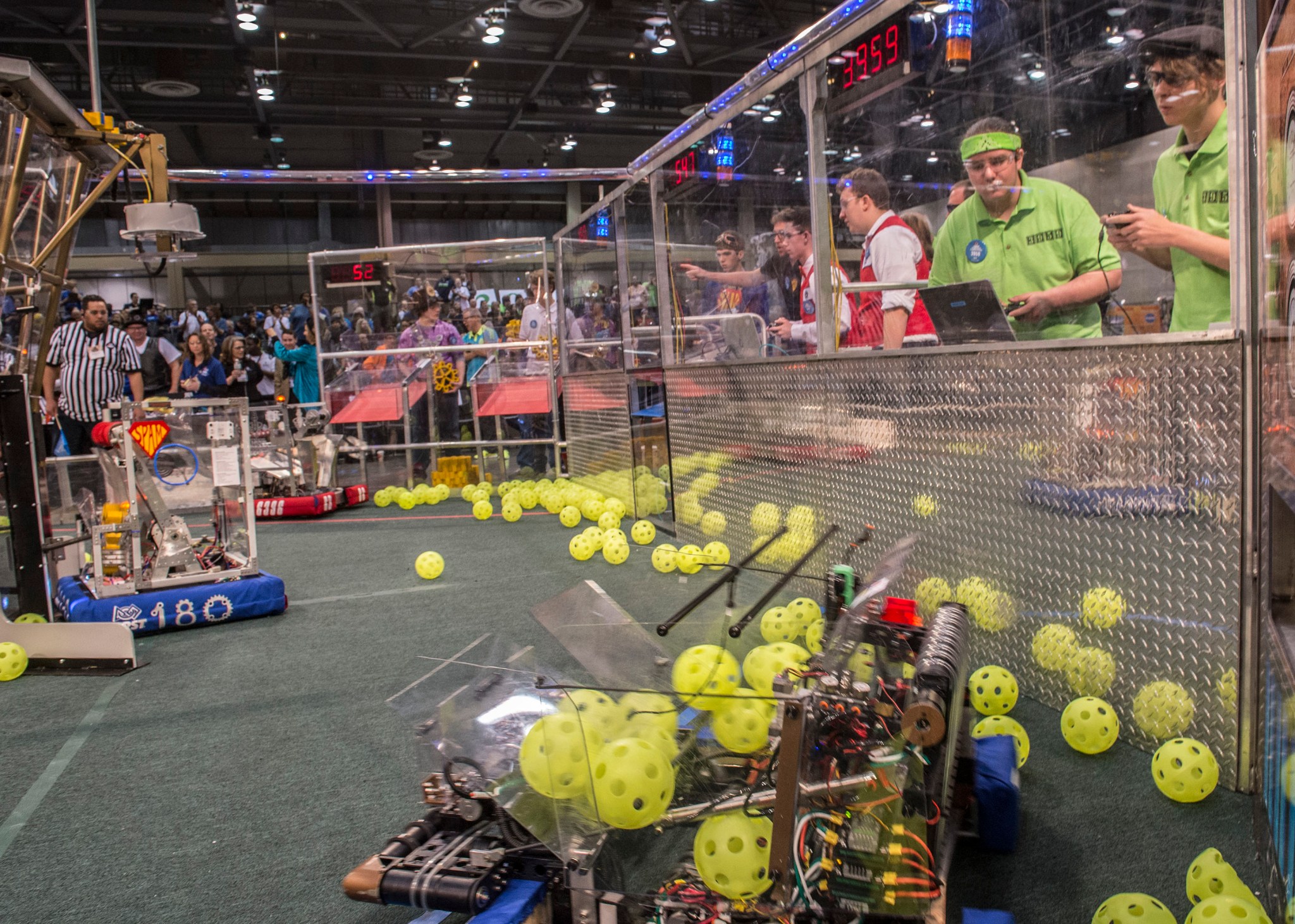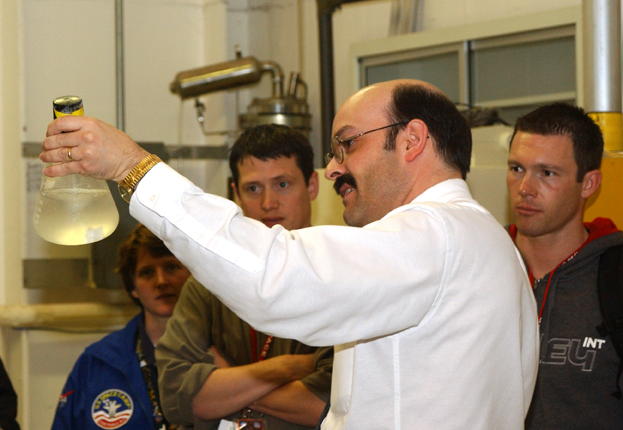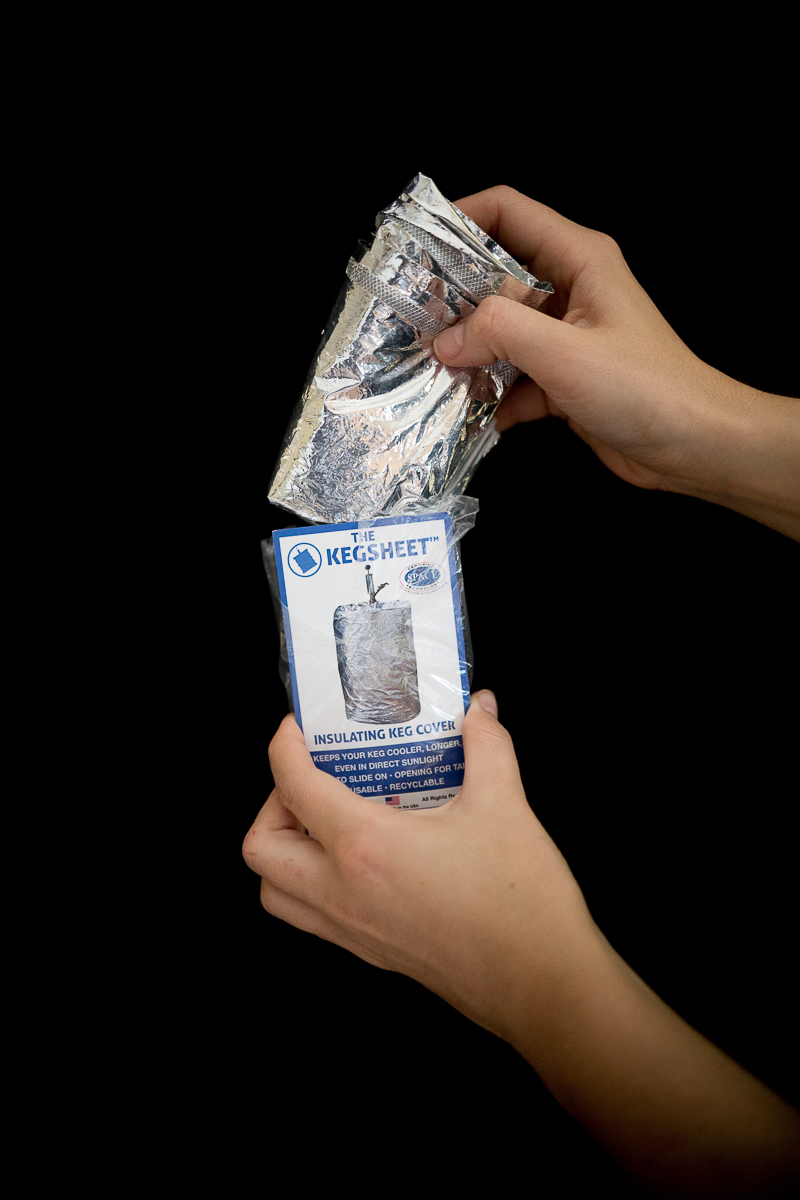In This Week’s Star
- NASA Acting Administrator Robert Lightfoot Announces Retirement
- Marshall Team Readies New, Space Station-bound Basic EXPRESS Racks for Shipment to Japan
- FIRST Robotics Competition Returns to Rocket City March 16-17
- American Astronautical Society Honors Marshall’s Environmental Control & Life Support Systems Team
- Beverage Getting Too Hot? There’s a NASA Technology Spinoff For That
- This Week in NASA History: STS-109 Lands – March 12, 2002
- Intertank Arrival at Marshall Highlighted on ‘This Week @NASA’
- Obituaries
NASA Acting Administrator Robert Lightfoot Announces Retirement
Robert Lightfoot Jr., NASA’s acting administrator since Jan. 20, 2017, announced his retirement from the agency on March 12 in an email to the NASA workforce. Lightfoot also served as director of Marshall Space Flight Center from 2009 to 2012. In a statement that followed the announcement, Marshall Center Director Todd May said, “Robert is a tireless public servant who has kept a steady hand on the helm over the last year. He holds a very special place in our hearts at Marshall Space Flight Center and we wish him all the best in his retirement.”
Lightfoot’s letter to NASA team members follows:
NASA team,
It is with bittersweet feelings that I am announcing I will be retiring from the agency on April, 30, 2018. I will work with the White House on a smooth transition to the new administrator.
I cannot express enough my gratitude to the entire NASA team for the support during my career and especially the last 14 months as your acting administrator. The grit and determination you all demonstrate every day in achieving our missions of discovery and exploration are simply awe inspiring. I leave NASA blessed with a career full of memories of stunning missions, cherished friendships, and an incredible hope for what is yet to come.
When I look back on my time at NASA, I can’t help but think about the people. From my friends in the test areas at Marshall and Stennis, to the folks that I sat with on console launching shuttles, to the Marshall team when I was the center director, and now as the acting administrator to the entire NASA team — what a privilege to work with such dedicated and passionate people every day.
There is no way I would be where I am today without having had such amazing opportunities and such a great set of colleagues. I’ve learned in so many ways that at NASA we make the impossible possible — whether it is with the missions we do or whether it is a small town kid who was able to lead the greatest agency in the world.
NASA’s history has many chapters with each of us having a part. I’ve written my part and now the pen is in your hands — each one of you. I know you will make this nation proud as you accomplish the many missions you have in front of you. For me, I look forward to more time with my family and closest friends, and cheering the NASA team on from the outside.
God speed to all of you and thanks for the opportunity to be part of something truly bigger than each of us individually! It’s been an unbelievable ride!
Marshall Team Readies New, Space Station-bound Basic EXPRESS Racks for Shipment to Japan

Inside a clean-room facility at Building 4708, Crandell McCloud, left, EXPRESS Rack project manager for the Boeing Co. of Huntsville, and Sean Thompson, payload facilities team lead in the International Space Station Projects Office at NASA’s Marshall Space Flight Center, conduct a visual inspection of two new Basic EXPRESS Racks — streamlined versions of NASA’s successful series of experiment storage and science cargo racks developed at Marshall and built by Boeing. Designed to dramatically expand science capabilities aboard the space station, these two racks will be shipped to Tanegashima, Japan, March 2018. Once there, they will be installed inside the Japan Aerospace Exploration Agency‘s HTV7 launch vehicle, bound for the space station later this year to complement the eight EXPRESS Racks currently in use by researchers in orbit. (NASA/MSFC/Fred Deaton)
FIRST Robotics Competition Returns to Rocket City March 16-17
By Jonathan Deal
Robots are returning to the Rocket City, which will host a regional FIRST Robotics Competition for the third consecutive year, March 16-17, in the South Hall of the Von Braun Center in downtown Huntsville. The First Robotics Competition “Rocket City Regional” is sponsored by NASA and supported by NASA’s Marshall Space Flight Center.
An estimated 1,800 high-school students on 50 teams from 12 U.S. states, Brazil and Canada will compete against one another in a new robotics game called, “FIRST POWER UP.” In January, each FRC team received an identical kit of parts and was given a six-week deadline to design, build and test a robot, with the help of adult mentors.
Opening ceremonies will begin at 8:30 a.m. CDT, with qualification matches starting at 9 a.m. on both March 16 and March 17. The Friday awards ceremony will begin at 5:45 p.m., while the Saturday awards ceremony will begin at 4:30 p.m. The event is free and open to the public, with hands-on educational activities provided by sponsors and exhibitors.
Jerry Cook, Space Launch System deputy manager at Marshall, will welcome competitors, and Johnny Stephenson, director of Marshall’s Office of Strategic Analysis & Communications, will provide remarks at Friday’s awards ceremony.
Marshall team members will present workshops throughout the two-day event, including “Now Boarding: NASAs Mission to the Moon and Beyond,” to be presented by Tia Ferguson, Space Systems Department deputy director, and Lakeisha Hawkins, Avionic Systems Integration Branch chief; and “How to Write an ‘Out of This World’ Resume,” to be presented by Tracey Washington, Office of Academic Affairs recruitment lead.
The “FIRST POWER UP” game features two alliances of video game characters and their human operators who are trapped in an arcade game and working to defeat a “boss” in order to escape. Each match begins with a 15-second autonomous period in which robots operate only on pre-programmed instructions. During this period, robots work to earn points according to the game’s rules. During the remaining 2 minutes and 15 seconds, student drivers control robots to earn points. For more details on the game’s rules, click here.
The FIRST — “For Inspiration and Recognition of Science and Technology” — Robotics Competition is a worldwide program for students in grades 9-12 that inspires the next generation of explorers to pursue careers in the “STEM” fields of science, technology, engineering and math. FIRST also offers the LEGO League, LEGO League Jr. and Tech Challenge programs for younger age groups. FIRST Robotics district and regional competitions are held across the country during March and April, providing teams a chance to qualify for the 2018 FRC Championship events at Houston and Detroit.
NASA and its Robotics Alliance Project provide grants for high school teams and support for FIRST Robotics Competition in an effort to inspire students to pursue STEM careers.
Deal, an ASRC Federal/Analytical Services employee and Marshall Star Editor, supports the Office of Strategic Analysis & Communications.
American Astronautical Society Honors Marshall’s Environmental Control & Life Support Systems Team
By Rick Smith
The American Astronautical Society has presented its Space Life Sciences Award for 2017 to the Environmental Control and Life Support Systems team at NASA’s Marshall Space Flight Center.
The award recognizes outstanding results of space life sciences research benefitting humanity or discoveries crucial to conducting human exploration of space. It will be presented to Marshall ECLSS team lead Keith Parrish March 14 during the Robert H. Goddard Memorial Symposium in Greenbelt, Maryland.
“The Marshall Engineering Directorate’s ECLSS Development Branch has earned a variety of center-level and NASA-level awards over the years. So this external honor, reflecting recognition by the broader aerospace industry for more than 30 years of service by our team, feels like a lifetime achievement award,” Parrish said.
The team was honored for its “exceptional service in discovering and establishing key technologies and developing systems necessary to establish a closed-loop environmental system in space,” according to Jim Way, executive director of the American Astronautical Society.
For more than three decades, Marshall’s ECLSS team — typically ranging from 45-65 civil service employees and on-site contractors, plus agency and industry partners — has led the design, testing and development of life support systems aboard the International Space Station, collectively known as its regenerative Environmental Control and Life Support System. Since completing the station’s ECLSS technologies, the team has built and supplied orbital replacement units and provided sustaining engineering expertise for critical space station life support systems.
The team also looks to the future, according to Parrish, designing and testing a new generation of life support systems, including hardware to remove carbon dioxide and humidity from future crewed exploration vehicles’ air supply and new wastewater-reclamation systems that leverage the space station’s successful system. Such technology could be used in future planetary habitats, he said, recovering a high percentage of potable water from waste water — vital to cutting costs and demand for resupply flights from Earth.
NASA’s Johnson Space Center also will be recognized during the symposium. Jonathan Bowie, assistant branch manager for the life support branch of Johnson’s Crew and Thermal Systems Division, is scheduled to accept a second AAS award.
Parrish is quick to share credit with the Johnson team and others for the successes the ECLSS team has achieved through the years. “We could not have accomplished everything we’ve done without crucial partnerships across the agency and the aerospace industry,” he said. Among those key partners: engineers, quality assurance personnel and others from Johnson, NASA’s Kennedy Space Center, NASA’s Glenn Research Center, NASA’s Ames Research Center and NASA’s Jet Propulsion Laboratory.
Read more about Marshall’s role in space station science and hardware here.
Smith, an ASRC Federal/Analytical Services employee, supports the Office of Strategic Analysis & Communications.
Beverage Getting Too Hot? There’s a NASA Technology Spinoff For That
By Will Bryan
Whether it’s an astronaut traveling through space or someone relaxing at the beach on a warm day, the heat of the Sun warms without ceasing. Engineers and astronauts worry about the temperature of a spacecraft and its components, while vacationers worry about the temperature of their drink. Fortunately, a NASA technology has resulted in a commercial spinoff that reflects away the Sun and keeps everything at just the right temperature.
In today’s world, this technology can be used in a variety of ways, including keeping a drink cold on a hot day. One group of innovative cycling fans found a way to use this to their advantage on a large scale. Called the KegSheet, the product developed by JUNTO LLC of Philadelphia uses NASA technology to keep kegs colder for longer.
KegSheet was developed by Dan Gwiazdowski and his friends in 2015 after trying to find a way to keep a keg cold overnight prior to an annual cycling event in Philadelphia. Storing the keg in a bucket of ice would necessitate refilling of the ice throughout the night. Gwiazdowski then remembered the emergency blanket in his car. Wrapping the metal-coated plastic sheet around the bucket kept the bucket and beer cold long into the next day, and eliminated the need to add ice in the middle of the night.
The story of this NASA technology spinoff goes back to the earliest days of the space program. Needing a lightweight, thin insulator to protect spacecraft and astronauts from the extreme temperatures of space, engineers at NASA’s Marshall Space Flight Center developed MPET — metallized polyethylene terephthalate — which is, in its most basic sense, plastic coated with metal. The material reflects incoming radiation extremely efficiently. This means that a spacecraft or person wrapped in the material and generating heat will have the generated heat reflected back to it, and any incoming radiation from the Sun or other heat source will be reflected away. In short, the material keeps hot things hot and cold things cold.
Following the success of the improvised thermal shield for beer, Gwiazdowski and his company began looking for the right version of the material to improve upon their idea. Some variations were too flimsy and could not stand up to re-use like they wanted. Others were too thick for their liking. Then Gwiazdowski came upon HeatSheets, manufactured by AFM Inc. of Petaluma, California. AFM was founded by David Deigan, who worked for one of the original suppliers of MPET to NASA.
AFM agreed to manufacture the KegSheet, and in 2016, the Space Foundation announced that the product was officially space certified. The foundation recognizes products that result directly from advances in the space program. Earning certification allows companies to market a product as being related to space exploration, while educating consumers on the tangible benefits of space exploration.
The KegSheet – a reusable, foldable product that can fit in a pants pocket — has proven on sunny days to keep an ice-chilled keg up to 15 degrees colder than its unwrapped counterpart. A test on a cooler day without the ice bucket showed the KegSheet kept the keg 3 degrees colder than its uninsulated counterpart. Recyclable, reusable and cheap, the product aims to help solve a recreation problem.
Whether your spring break and summer plans include backyard barbeques, trips to the beach or vacations to exotic locations, there is a NASA spinoff to help make it better.
“For more than 50 years, the Technology Transfer Office at Marshall Center has worked with center innovators to identify technologies with commercial potential and license those technologies to companies,” said Terry Taylor, manager of Marshall’s Technology Transfer Program. “If you were able to develop a new technology or software tool in your NASA work, we’d love to hear about it.”
If you have an idea that can put the competition on ice, let Marshall’s Tech Transfer Office know.
Bryan, an ASRC Federal/Analytical Services employee, supports the Office of Strategic Analysis & Communications.
This Week in NASA History: STS-109 Lands – March 12, 2002
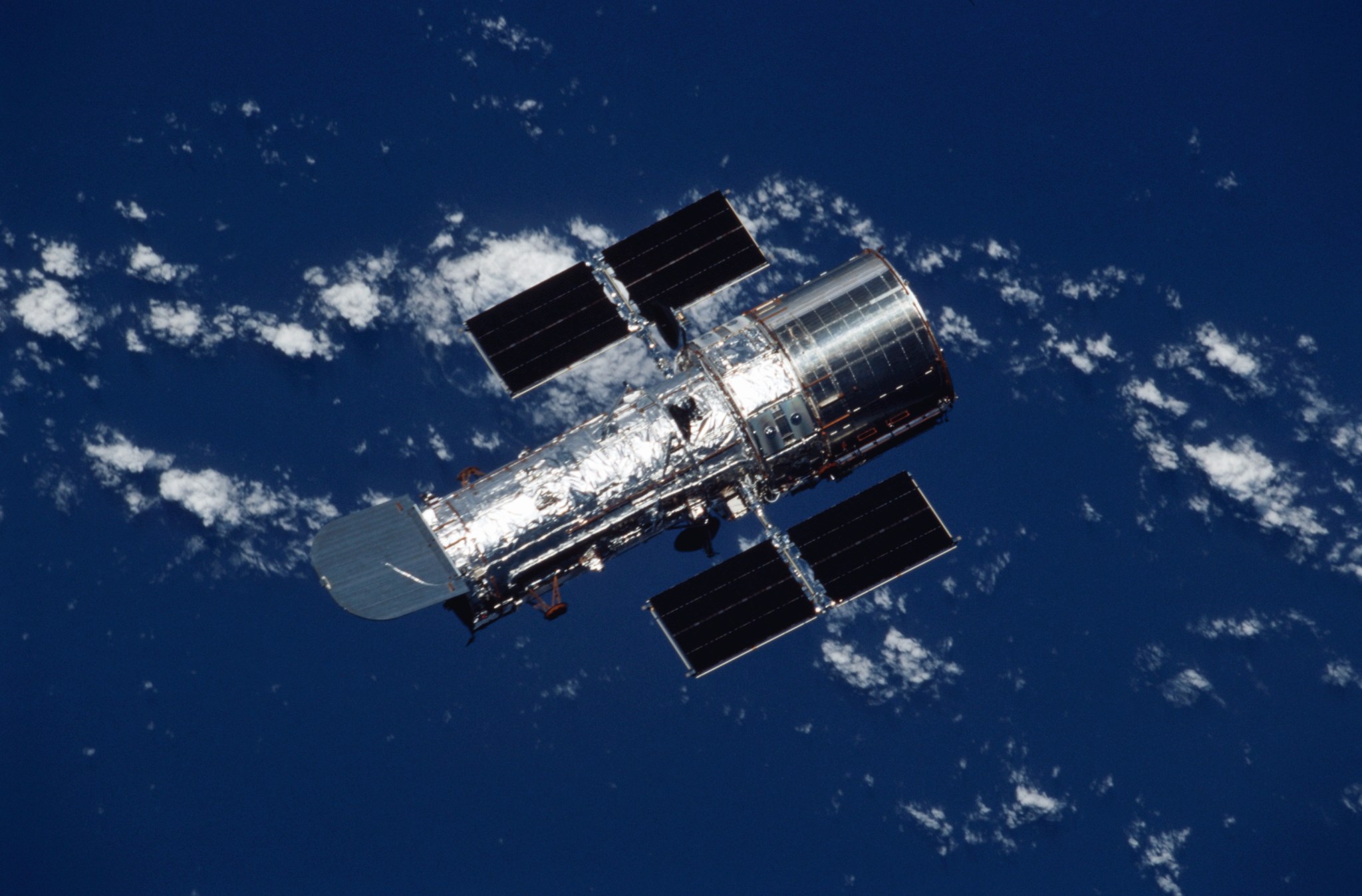
This week in 2002, the space shuttle Columbia, mission STS-109, landed at NASA’s Kennedy Space Center following a successful 10-day mission to service the Hubble Space Telescope. Over the course of five Extra Vehicular Activities, the crew replaced Hubble’s solar panels and installed the Advanced Camera for Surveys, which took the place of Hubble’s Faint Object Camera, the telescope’s last original instrument. Here, Hubble is in orbit following its release after a week of servicing. NASA’s Marshall Space Flight Center was responsible for the design, development and construction of the telescope. Hubble was designed with these types of on-orbit servicing missions in mind as a way of extending the telescope’s lifespan. The NASA History Program is responsible for generating, disseminating and preserving NASA’s remarkable history and providing a comprehensive understanding of the institutional, cultural, social, political, economic, technological and scientific aspects of NASA’s activities in aeronautics and space. For more pictures like this one and to connect to NASA’s history, visit the Marshall History Program’s webpage. (NASA)
Intertank Arrival at Marshall Highlighted on ‘This Week @NASA’
The arrival of NASA’s Space Launch System intertank test article at NASA’s Marshall Space Flight Center is featured in “This Week @NASA,” a weekly video program broadcast nationwide on NASA-TV and posted online.
A test version of the SLS intertank — one of five components that make up the rocket’s 212-foot-tall core stage — was recently shipped from NASA’s Michoud Assembly Facility to Marshall for tests to ensure the rocket can withstand the more than 8 million pounds of thrust experienced during liftoff and spaceflight.
Marshall manages SLS for NASA.
View this and previous episodes at “This Week @NASA” on NASA’s YouTube page.
Obituaries
Jeppy L. Clayton, 62, of Madison, Alabama, died March 6. He began working at the Marshall Center in 1989, where he was still employed as an engineer at the time of his death. He is survived by his wife, Leeann Clayton.



























